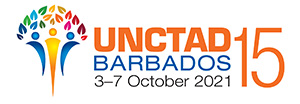The International Public Sector Accounting Standards Board (IPSASB) has published an Exposure draft:
Proposed International Public Sector Accounting Standards Board Sustainability Reporting Standard: Climate Related Disclosures
The Intergovernmental Working Group of Experts on International Standards of Accounting and Reporting (ISAR) intends to provide feedback on the exposure draft, bringing together the views of its experts and its formal membership in an integrated response.
ISAR’s feedback is envisaged to cover not only the substance of the proposed standard, but also implementation issues (based, for example, on ISAR’s experience with the dissemination of the core indicators for SDG reporting) and developing country perspectives (including inputs from ISAR’s Regional Partnerships in Africa, Asia, Eurasia, Gulf States and Latina America that have been established to support with implementation of sustainability reporting requirements).
To this end, UNCTAD-ISAR has organized this virtual consultative meeting to discuss the exposure draft and outline a response.
The meeting is being convened in accordance with the outcome of the forty-first session of ISAR which took place last November, in which the UNCTAD secretariat was asked to “continue following developments on sustainability reporting requirements, including the development of sustainability reporting standards for public sector entities and to act as a channel for the views and positions of ISAR, and in this connection calls on the UNCTAD secretariat to establish a consultative group to support this process.”
The discussion will focus on four aspects of responses to the Exposure Draft: overall approach, scope, implementation, and capacity-building. Main points to address will include:
- How well does the overall approach meet the needs of public sector entities and users of their financial statements?
- Are the proposals relevant and sufficient?
- Are there aspects of the proposals that might hinder implementation?
- What are the most significant capacity gaps? How can ISAR help?
